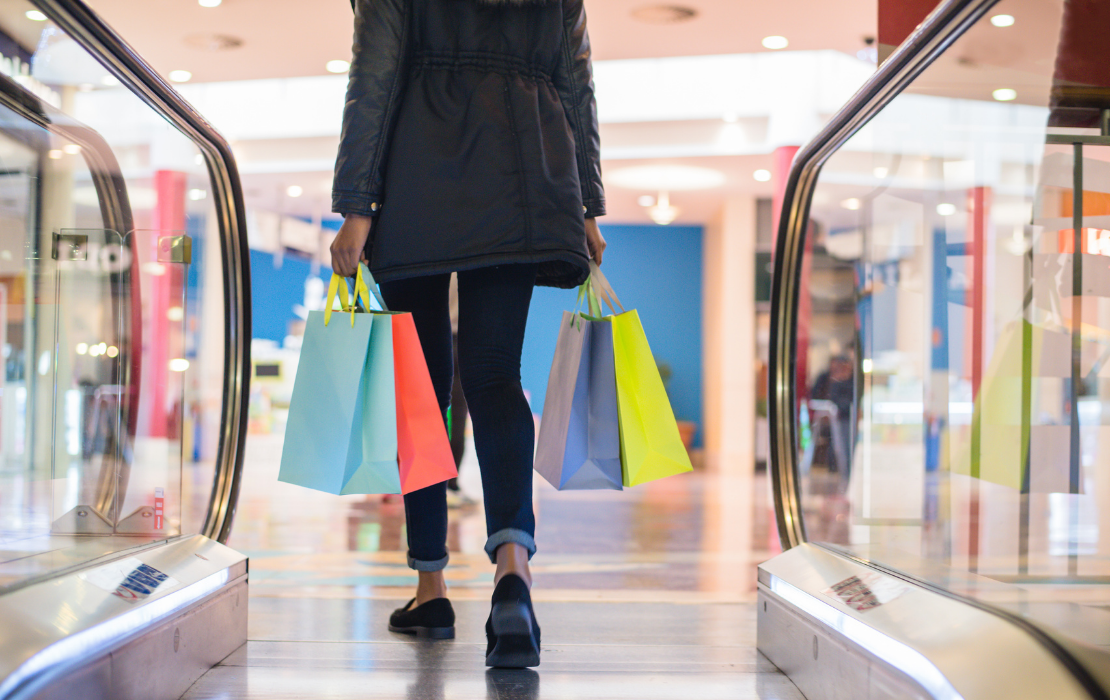Returning to stores is… less than fun.
After weeks or months of being cooped up at home, consumers have begun to venture back out into retail spaces. Anyone who walks in expecting it to feel like “old times” is likely to be disappointed.
From my own experiences, returning to some of my favorite retailers has been a letdown. For example, I’ve been reprimanded for not noticing a hand-sanitizer station to the side of a store entrance. I’ve also been scolded for approaching a check-out counter. I appreciate the safety of cleaning the counter between each customer, but it felt like I was being pushed away.
On top of that, wearing a mask and being mindful of physical distance from other consumers makes the shopping experience more stressful. Discovering that many products are out of stock has become another routine source of frustration. And standing in long lines – often with equally agitated fellow shoppers – can make me want to just abandon my cart and return to the safety of home! Safety is king, but can we find an equally pleasing way to shop in the COVID world?
Without question, these safety precautions and social distancing guidelines are the right thing to do. But they’ve fundamentally changed customer experience in retail. I’m now minimizing my trips to brick-and-mortar stores and seeking out simple and reliable contactless retail alternatives. And I’m not alone. The Adobe Digital Economy Index found that U.S. consumers spent more money online in April and May 2020 than we did at the height of last year’s holiday shopping season (November and December 2019). That spike proves that customers are concerned about safety, yes, but there is likely another factor at play: convenience.
When I order ahead, I can avoid all of the stressors of in-store shopping. It’s simple and effective to choose what I need and then wait a few days for it to arrive on my doorstep. Easy peasy, right?
The digital model may be simple for consumers, but some retailers have been caught flat-footed in the wake of the digital ordering surge. These retailers need to catch up to the businesses that were ready for the ecommerce influx before COVID arrived on the scene.
Just as consumers are living in a changed world, retailers are operating in a different reality, too. If your digital customer experience strategy hasn’t been updated since before March 2020, it’s obsolete. If your customer service strategy hasn’t been overhauled, it’s out of date. And if your processes for curbside or buy online, pick up in store haven’t been refreshed, they could be putting your customers and employees at risk.
Revisiting every aspect of your digital strategy isn’t just about adapting to the COVID world. It’s about creating the best possible experiences for your customers. The pandemic has accelerated existing trends. And as the virus continues to have an impact in uncertain ways, no one knows if or when it will be safe to resume “business as usual.”
Digitally transform your business for better customer experiences
The focus is no longer putting together a makeshift strategy to get through a crisis. It’s about a whole new way of thinking about your business and how you can meet your mission – whether you’re a retailer, restaurant chain, or convenience store.
Here are a few ways to start:
Audit your customer experience. Set aside assumptions about how things have always been. With fresh eyes, assess the realities of your in-person and digital customer experience. Where are there bottlenecks or safety risks? Where are there pain points for customers? And where are there opportunities to increase digitalization? The costs of a bad experience are high. 66% of consumers will consider switching to a competitor after just one or two bad experiences.1 With numbers like this, you must begin to consider the experiences that are making or breaking the loyalty to your brand.
Build or improve self-service tools. If you already have a mobile app, consider how you can further refine it to make shopping easier for your customers. If you don’t yet have an app, take a big-picture approach to designing and building one. Don’t make assumptions based on the past; build in agility and adaptability to accommodate ongoing uncertainty and changing consumer behaviors. Our proprietary Friction Report uses artificial intelligence and machine learning (AI/ML) to analyze hundreds of thousands of customer reviews so that you can see what really matters to them and how to prioritize the features and experiences in your app.
Extend your app. Many other technologies are now available to enhance digital and “phygital” customer experiences. Your mobile app is an ideal launching point. For example, Wegmans has launched a “scan” capability that empowers customers to scan and bag their groceries as they shop. Earlier this year, a Mobiquity client added augmented reality to deliver an enriched event experience - as larger events return, how can you think outside of the box with digital to ensure attendees stay safe while in person? Think about how the digital customer experience transcends your mobile app and how to ensure the engagement is carried throughout all of your channels.
If you’re ready to start thinking about how you can meet customers’ increasingly high expectations – in an increasingly dynamic time – let’s chat.
Resources:
1. 2020 CCW Market Study, Customer Experience Trends, Challenges & InnovationsWe believe that addressing customer challenges gives you opportunities to delight. Using our proprietary Friction Reports and strong industry expertise, we dig deep into customer sentiment and create action plans that remove engagement roadblocks. The end result is seamless, relevant experiences that your customers will love.
